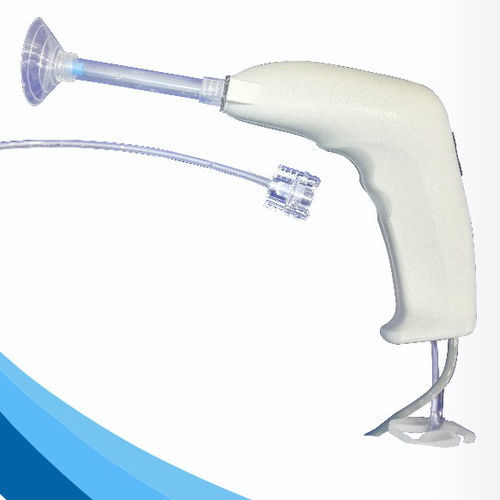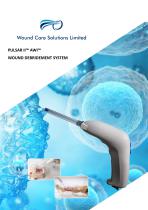
- Secondary care
- Orthopedic surgery
- Wound debridement pulsed lavage system
- Wound Care Solutions
Wound debridement pulsed lavage system Pulsar II™ AWI™

Add to favorites
Compare this product
Characteristics
- Applications
- wound debridement
Description
Wounds, in particular chronic wounds, present a challenge to patients and healthcare
providers and also represent a major health care burden worldwide. The burden is growing rapidly due to increasing health care costs, an aging population and a sharp rise in the incidence of diabetes and vascular disease worldwide. To combat the increasing number of patients with chronic wounds and wound healing problems, the need for advanced wound care technique is sharply on the raise .
Chronic Wounds
Acute wounds heal in an anticipated time range, typically 21 days or less, and repair the skin
structural and functional integrity. Chronic wounds, by comparison, result from an inadequate or disrupted healing process and are defined as those wounds that neither follow a normal trajectory nor restore the skin functional and structural integrity. Chronic wounds or ulcers may take months or years to heal.
Chronic wounds are often classified by etiology as arterial, diabetic, venous insufficiency,
pressure ulcers, or non-healing surgical wounds. However, the variability in the local chronic wound environment is largely due to one of five common actors: diminished perfusion, decreased oxygenation, increased mechanical forces, malnutrition, or systemic disease.
It is the presence of these actors that determines its chronicity. Nonetheless, the division of chronic wounds by etiologic category allows capture of the primary pathophysiologic actors and statistics by disease process common to each wound type. Regardless of the etiologic classification assigned to a non-healing wound, all chronic wounds possess similar cellular and biochemical impairments
VIDEO
Catalogs
Related Searches
*Prices are pre-tax. They exclude delivery charges and customs duties and do not include additional charges for installation or activation options. Prices are indicative only and may vary by country, with changes to the cost of raw materials and exchange rates.


